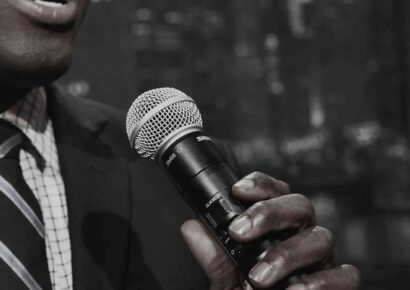Exploring the sound and set-up of the cult-classic Fender
Over the years, there’s been some confusion over what the Fender Bass VI actually is – is it a baritone guitar, or is it a bass? Fender, the creators of this wonderfully unique instrument, maintain that the Bass VI is indeed a bass guitar. But what exactly sets it apart from your typical baritone guitar?
Fender Bass VI
For starters, baritone guitars are strung with guitar strings, with a scale-length usually measuring around 27”. Baritone guitars rarely utilise the standard guitar tuning; players generally tune the instrument a perfect fourth lower than a guitar (B E A D F# B), whereby the fifth-string baritone E is pitched the same as the sixth-string low E on guitar. This essentially means the baritone will give you slightly more low-end depth, but not a whole lot more.
Summary:
- The Fender Bass VI is strung with custom-made bass strings.
- The Fender Bass VI ideal for guitarists who wish to lend some lower-end frequencies to the mix, but aren’t too accustomed with the feel of a standard four-string bass.
- Some legendary bands have used the Fender Bass VI ranging from The Beatles to the Red Hot Chili Peppers.
Read all the latest features, lists and columns here.
The Fender Bass VI, on the other hand, is strung with custom-made bass strings which are especially designed to fit the specifications of the instrument. The scale-length is around 30”, which is the same as short-scale four-strings such as the Mustang or Musicmaster.
Bass Fender VI
Its tuning is identical to an electric guitar, albeit an octave lower. This makes the Bass VI ideal for guitarists who wish to lend some lower-end frequencies to the mix, but aren’t too accustomed with the feel of a standard four-string bass. Keep in mind that the Bass VI’s strings are naturally a bit thicker than those on a guitar, so muting the strings you’re not playing is essential in ensuring those harmonic overtones don’t creep in.
Conversely, for four-string bassists looking to tackle the Bass VI, you may find the narrow string-spacings will take some getting used to. This also means that using a plectrum is probably the surest way of getting a nice, even tone from the instrument. The tension of the tuning pegs is significantly less than on your standard Precision or Jazz Bass, so a slow and steady tuning action will do the trick. The question now is, who used the Bass VI?
‘Hey Jude’ – The Beatles
The beauty of the Bass VI is that it’s been used by both guitarists and bassists alike. In this 1968 clip of The Beatles performing a live rendition of ‘Hey Jude’, George Harrison can be seen playing the Fender Bass VI, while Paul McCartney weaves his magic on that glorious Bechstein upright piano. With John Lennon providing the rhythm guitar part, Harrison’s role on the Bass VI is simple: play the root note, and lock in with Ringo (as much as is feasible).
‘Ripple’ – The Church
Steve Kilbey of The Church has also handled the Fender Bass VI on occasion, with his typically growling, melodic bass timbre translating beautifully across to the instrument. On this 2013 live performance of ‘Ripple’, we hear the sonic fullness of the Bass VI cut through a sea of distortion and synths.
Glen Campbell and Phil Baugh
For those who fancy the odd zippy guitar solo, you’ll be happy to know that the Bass VI sounds absolutely wicked when shredded. This clip from the mid-‘60s shows a guitar duel between the immensely gifted Glen Campbell and Phil Baugh, with the latter donning a Fender Bass VI. Campbell – arguably one of the first ever guitar shredders – picks every note with that lightning-quick right hand, while Baugh well and truly holds his own with some roving bass runs.
‘Pictures of You’ – The Cure
One of the most remarkable things about the Bass VI is its ability to bring something unique to the table: from ‘60s rockabilly jams to ‘80s gothic rock, the inclusion of the Bass VI always makes for intriguing listening. The Cure frontman Robert Smith has often employed the six-string bass, which features heavily on their 1989 number ‘Pictures Of You’. Smith’s playing complements the driving four-string work of Simon Gallup on this chilling 2019 live performance.
‘Happiness Loves Company’ – Red Hot Chili Peppers
Some of you may still be wondering: “How can something that looks more like an electric guitar sound anything like a bass?” I’ll let former Red Hot Chili Peppers linchpin Josh Klinghoffer take care of this one. Throughout this 2011 live set in Cologne, a visibly upbeat Flea makes his way over to the piano; here, he proceeds to tear through a Bach Invention, as well as a snippet of Bird’s ‘Billie’s Bounce’. All the while, Klinghoffer is setting up his Bass VI, running it through Flea’s trusty Gallien-Krueger rig. The ensuing sound is a robust, low-end growl that only the Bass VI can conjure.
Rediscover the talent of these seminal indie rock bassists.

